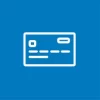If you have a private account or credit card, you receive monthly statements from your bank or card issuer. In addition to the purchases which you made yourself using your debit card or credit card, you may notice other charges made by fraudsters listed on your statements as well. In this guide, moneyland.ch answers the most important questions about card fraud, and explains how to protect your card information from falling into the wrong hands.
Debit cards and credit cards
When you pay for a purchase using a debit card, the payment is charged directly to your bank account. With credit cards, on the other hand, you receive regular credit card bills for your cumulative purchases. The new Debit Mastercard and Visa Debit cards can be used to pay online just like credit cards.
How can I recognize fraudulent transactions?
The most important tip: Check your bank account and credit card statements carefully as soon as you receive them. That applies whether you receive paper statements by mail, or digital statements in online banking, web portals, or apps. Check your credit card statements even if your credit card bills are paid automatically from your bank account with a direct debit order.
Because many consumers are not in the habit of thoroughly reading through their statements, it is relatively easy for thieves to get away with card fraud. Often, fraudsters only make small purchases because you are more likely to overlook small transactions.
What should I do if I find incorrect transactions on statements?
If you find a transaction on your statement that you did not make, you will have to take action immediately. Incorrect debit card transactions must be reported to your bank. Incorrect credit card transactions must be reported to your card issuer. A good first step is to phone the customer service line and report the incident, as it is possible that additional fraudulent charges have been made in the meantime.
Submitting a written complaint is also recommended. Some service providers offer forms for reporting fraudulent transactions on their websites. These can be filled out and submitted. Make sure to file the report as soon as you discover the fraudulent charge, because your right to dispute transactions expires after 30 days.
Will I be reimbursed after a fraudulent transaction?
Swiss banks and card issuers are typically accommodating, but they review each case individually. Decisions about whether or not to reimburse you, and if so, how much compensation to provide, are also made on a case-by-case basis.
Banks have increasingly been formulating their terms and conditions so as to transfer responsibility for fraudulent transactions to customers. For that reason, it is very important to use debit cards and credit cards in a careful manner.
One of the basic rules set out by payment networks Mastercard and Visa is that online merchants are responsible for losses if they do not incorporate security features like 3-D Secure into their checkout processes. Fraudsters often make purchases in stores which do not require additional authentication because it is simpler. All that is needed to make a purchase is the card number and the card expiry date.
How can fraudsters get ahold of my card information?
Thieves can get ahold of your debit card or credit card information in a number of different ways. Here is a list of possible ways in which a third party might obtain a card number, expiry date, the name on the card, or the short authentication code for online purchases:
- Somebody gets ahold of your card information by stealing your wallet or purse with your cards in it.
- You lose your wallet or purse with your cards in it.
- Fraudsters use phishing techniques to con you into entering your card information on a purpose-built website. They then use the information to make purchases.
- A dishonest merchant or employee copies your card information.
- A dishonest merchant or employee has a good memory, and memorizes information on cards when accepting payments.
- Hackers gain access to a computer system from a merchant or payment service provider on which your card information is stored.
- Many banks and card issuers have systematically-generated card numbers. Some fraudsters simply roll the dice by trying out as many numbers as they can. That is one reason why even cards which you place in a safe and never use can still be affected by fraudulent transactions.
- Fraudsters may use malware to secretly copy card information from your digital device.
Data is particularly valuable for fraudsters if, in addition to the card number, it also includes the expiry date and other data, such as a PIN code or a password for online access.
- A PIN code can be obtained if it is written down and kept in a wallet along with the card, or is easy to guess (your birthday, your car’s license plate number, or your home’s ZIP code, for example).
- Login information for online access to your credit card may be obtained using phishing attempts. Depending on the system, fraudsters may be able to use your login information to authenticate online purchases.
Can fraudsters use stolen card data to shop online?
It is important to differentiate between two different scenarios:
- Online shops without additional authentication (3-D Secure, for example): Some shops let you buy using only the card’s number and expiry date. Making fraudulent purchases in these stores is easy. Online retailers based in European Union (EU) countries are required by law to use additional authentication. But that rule only applies if the card being used to pay is issued in an EU country. That means Swiss cards can be used to make online purchases without extra authentication.
- Online shops with additional authentication: Most shops require customers to authenticate purchases using 3-D Secure or similar applications. Because of that, simply getting ahold of your card’s number and expiry date may not be sufficient. The fraudster also has to either gain access to the authentication code, or get ahold of your login information. Because this requires significant effort, cases of this kind of fraud are less common.
How can I prevent card fraud?
There is no way to completely rule out the risk of card fraud. But there are some steps you can take to minimize the risk of becoming a victim of fraud.
- Store your cards safely: By storing your cards in a secure location, you make it more difficult for third parties to access them.
- Set up real-time alerts: Some service providers give you the option of getting alerted via an app or SMS message whenever a purchase is made with your debit card or credit card. These alerts tell you which merchant the purchase was made from, and how much the purchase cost.
- Check the amount: Check the exact amount being charged before you tap your card on the contactless terminal or enter your card information into an online checkout. Ask the store for a receipt. When shopping online, make a screenshot of the page.
- Lower your card’s spending limit: If your card’s limit is higher than the amount you actually need, you can have your card issuer lower the spending limit. That reduces the maximum possible loss you could incur from fraudulent transactions. In the case of credit cards, many issuers give you the option of paying extra money into your card account in order to increase the amount you can spend. Some issuers let you change your card’s limit online or in an app.
- Never click on unknown links in messages! If you are ever asked to click on a link in order to update account information, simply ignore that message entirely. The same holds true if you get a message asking you to make a payment. Fraudsters frequently contact you under the guise of being parcel delivery services and inform you that you must pay a small fee before your parcel can be delivered. Fraudsters use this trick to obtain your card information. Genuine banks, card issuers, officials, or companies will never send you these kinds of links.
- Deactivate transactions: Some banks and card issuers let you adjust the settings for your card using their online portal or app. The settings may include the option of deactivating and reactivating different kinds of transactions. For example, you may be able to freeze and unfreeze your card, or even deactivate contactless payments or online transactions.
- Use neobanks: Many neobanks have prepaid accounts, so that you can never spend more money than is available in the account. Many let you move money to sub-accounts which are not linked to your card and cannot be used for card transactions. If you need money for a purchase, you can simply move it from the savings to the spending account with a few taps in the mobile app, after which you can use it for card payments.
- Use virtual cards: Some banks offer virtual credit cards which can be used for online payments. Some service providers offer disposable virtual cards. Once you use the card information for a purchase, the virtual card is deleted, and no more transactions can be charged to that card number.
- Use antivirus software: Make sure that your computer, phone, and other devices are equipped with antivirus software to prevent infections by malware.
More on this topic:
Compare Swiss credit cards now





